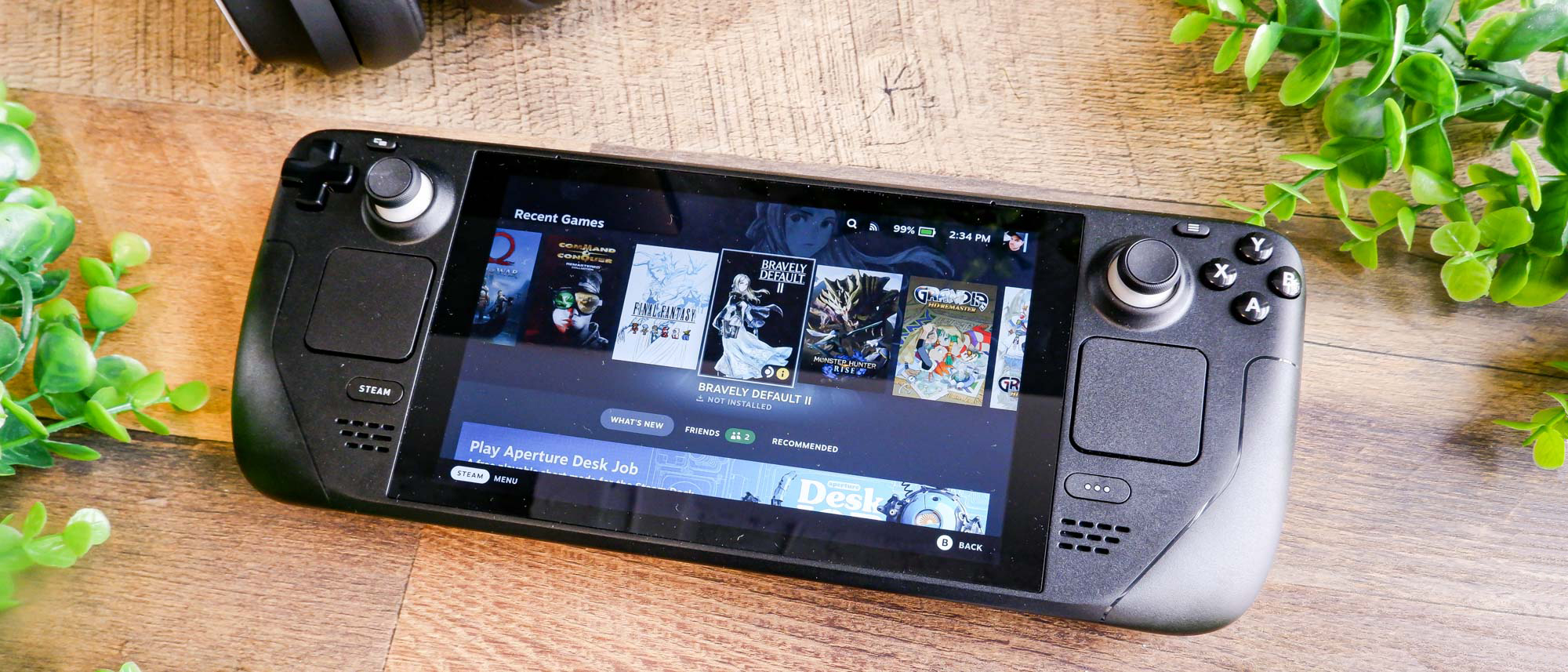Tom's Guide Verdict
The Valve Steam Deck mostly delivers on its promise of allowing you to play PC games on the go. While it's not perfect, future updates may unlock the device's full potential.
Pros
- +
Sturdy and light
- +
Comfortable to hold
- +
Large 7-inch screen
- +
Huge library of compatible Steam games
- +
Snappy SteamOS 3.0 interface
Cons
- -
Large bezels
- -
Doesn't support all Steam games
Why you can trust Tom's Guide
Release Date: Feb 22, 2022
Price: $399 (starting), $529 (reviewed)
Chipset: Custom AMD Zen 2 "Van Gogh" APU
Storage: 64 GB (starting), 256 GB (reviewed)
Operating system: Steam OS 3.0
Display: 7-inch LCD touchscreen (reviewed)
Max Resolution: 1280 x 800 (16:10)
Max Framerate: 60 fps
Ports: 1 USB-C, 1 3.5 mm audio jack, 1 microSD card reader
Size: 11.73 x 4.6 x 1.93 inches
Weight: 1.47 pounds
Battery Life: 3 hours 51 mins (as tested)
Valve’s Steam Deck (starting at $399) is arguably the finest handheld console ever made. That isn’t to say it’s perfect, but tech-wise, it blows away machines like the Nintendo Switch and PlayStation Vita. The fact that such a small machine can run Steam games is akin to magic. Valve has created a technological marvel.
Despite its virtues, Steam Deck is still something of a work in progress. You can’t play every game in your Steam library, and the touch-based controls aren’t as precise as I would have hoped. The battery life also leaves something to be desired. Valve can (and likely will) address some of these issues via future updates. In fact, Valve even revealed that it has been making some slight hardware upgrades under the radar as issues are discovered. But even in its current form, this handheld is exactly what I wanted.
Steam Deck review: Price and availability
- Starts at $399
- All configurations pack "Van Gogh" APU and 16 GB of RAM
- Wait times are still long
The Valve Steam Deck has three configurations. Aside from different storage and display options, all three units are identical. Storage options include 64 GB for $399, 256 GB for $529 and 512 GB for $649. The latter model also has an anti-glare etched-glass display. All configurations come with a black carrying case that has a Steam Deck logo on top. The $649 unit’s carrying case has gray lining on the inside, and also comes with a cleaning cloth.
At present, the Steam Deck is only available to purchase on Steam’s website or desktop application. Though the handheld is technically out, snagging one is similar to the pre-order process from 2021. You’ll reserve your preferred configuration for $5, and pay the full amount when Valve ships the unit. Before that happens, Valve will send an email so that you can confirm and finalize your order. At the time of this writing, orders won’t begin shipping until October (or later) of 2022.
Steam Deck review: Design
- One of the largest handhelds
- Sturdy build quality
- Light, despite its size
- Comfortable to play for extended periods
At 11.73 x 4.60 x 1.93 inches, the Steam Deck is one of the largest handhelds ever released. It’s certainly the biggest I’ve played. Though many buyers compare it to the Nintendo Switch, the Steam Deck reminds me more of the Sega Game Gear – though obviously, much larger. And despite weighing close to 1.5 pounds, the system feels surprisingly light. The Steam Deck’s build quality makes it look like a premium product, with its thick flat center and contoured hand grips.
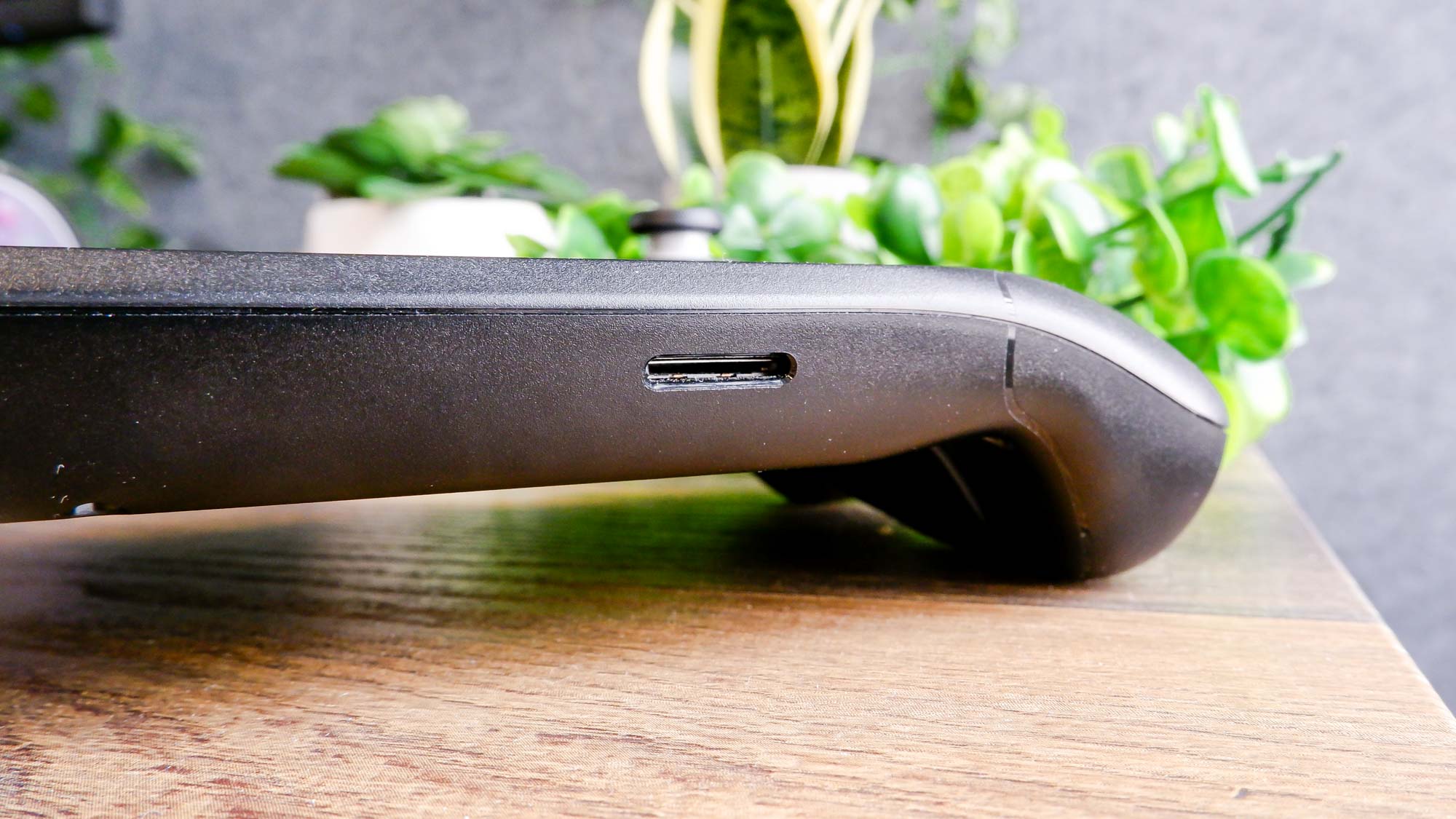
There are two analog sticks and two trackpads on either side, along with a D-pad on the left and X/Y/A/B buttons on the right. The View and Menu buttons serve as Select and Pause in-game, respectively, while the Steam and Quick Access buttons let you access SteamOS.
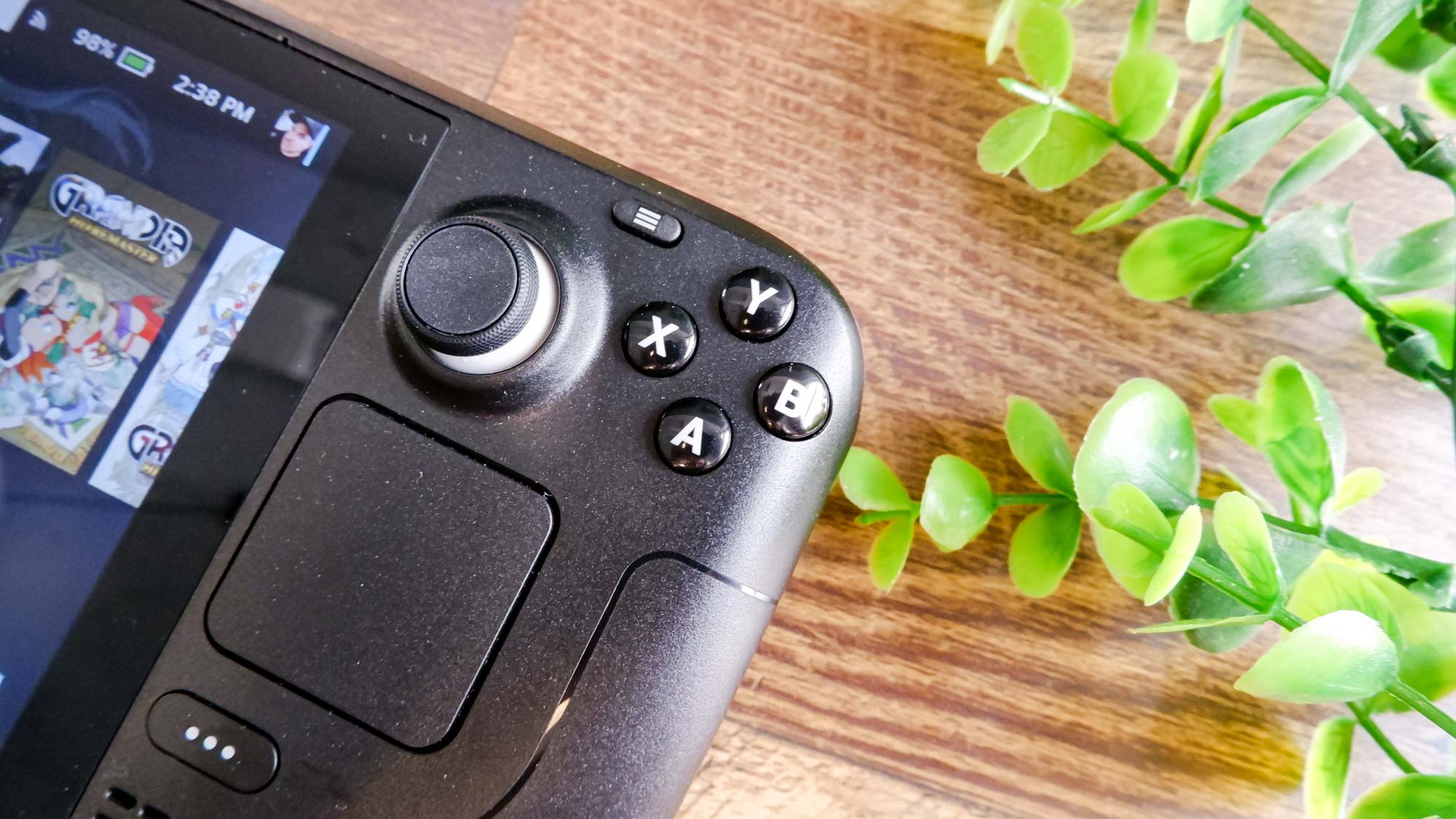
Volume buttons, a 3.5 mm headphone jack, a USB-C port and a power button are located between the shoulder buttons. There are also four programmable back buttons and an SD card reader on the Steam Deck’s underside. Two speakers reside underneath the Steam and Quick Access buttons, respectively. You’ll also find air vents along the top.
Get instant access to breaking news, the hottest reviews, great deals and helpful tips.
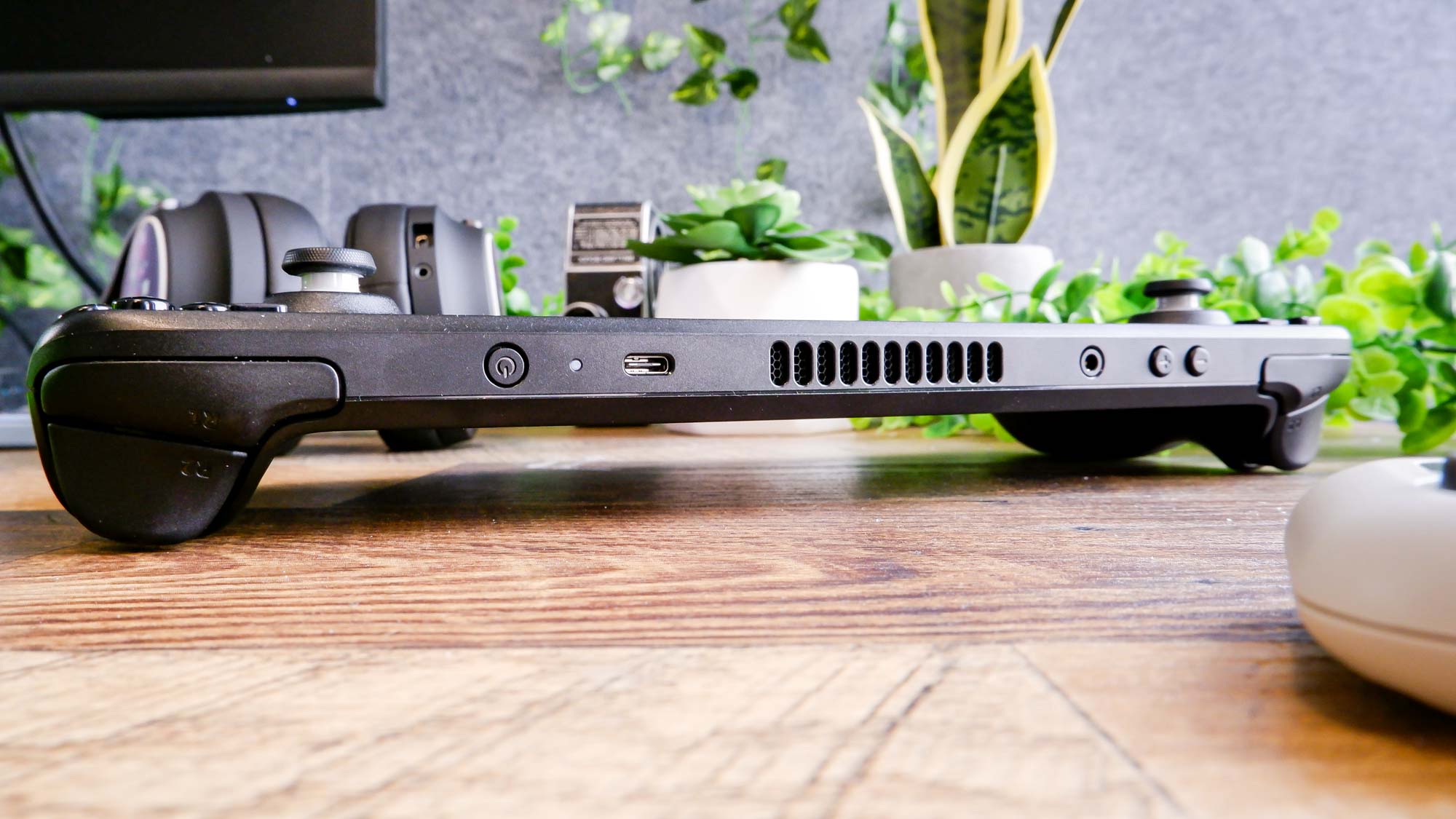
The Steam Deck’s design isn’t wildly different from other handhelds, but it looks great regardless. Button spacing and weight distribution make the unit comfortable to use for extended periods. It’s clear that Valve put a lot of thought into the user experience, even going so far as to place the USB-C port on the top so you can easily play while plugged in.
Steam Deck review: Display
- Sharp 7-inch LCD touchscreen
- Large bezels take up precious real-estate
- Can be hard to read small text
Games look phenomenal on the Steam Deck’s 7-inch 1280 x 720 LCD touchscreen. The 16:10 aspect ratio works well when navigating through the SteamOS interface. Many modern games have a 16:9 aspect ratio, however, meaning that you’ll lose some real estate above and below the game screen.
In our Tom's Guide testing, we found that the display reached an average of 169.7 nits of brightness. It produces 68.5% of the sRGB color gamut and registers 48% of the DCI-P3 color gamut. The latter figures fall short of the desired 100% or above target. Numerically, the screen isn't all that bright. In real-world usage, though, it's bright enough so long as you're indoors. If you plan to play outside, you'll want to remain in a shaded spot. I can't speak to how well the model with the anti-glare screen works outdoors.

While images look crisp, the large bezels surrounding the screen are something of an eyesore. I also can’t help but wonder if the device could have had a larger screen if the bezels were thinner.
The screen size is sufficient for displaying game graphics. However, that isn’t always the case when it comes to on-screen text. I have relatively good eyesight, but even I squinted when trying to read the tiny text in Cyberpunk 2077 and Command & Conquer: Remastered. That’s because these titles have in-game text suited to monitors and televisions. You can adjust text size in some games, but you’re out of luck if that option doesn’t exist.
Steam Deck review: Performance
- Can run most compatible games at around 30 fps
Steam Deck has impressive specs for a handheld. All three models run on a custom AMD Zen 2 “Van Gogh” APU and pack 16 GB RAM. This obviously can’t compete with the best gaming laptops or best gaming PCs, but it’s enough to play many games at decent frame rates, especially if they’re optimized for SteamOS.
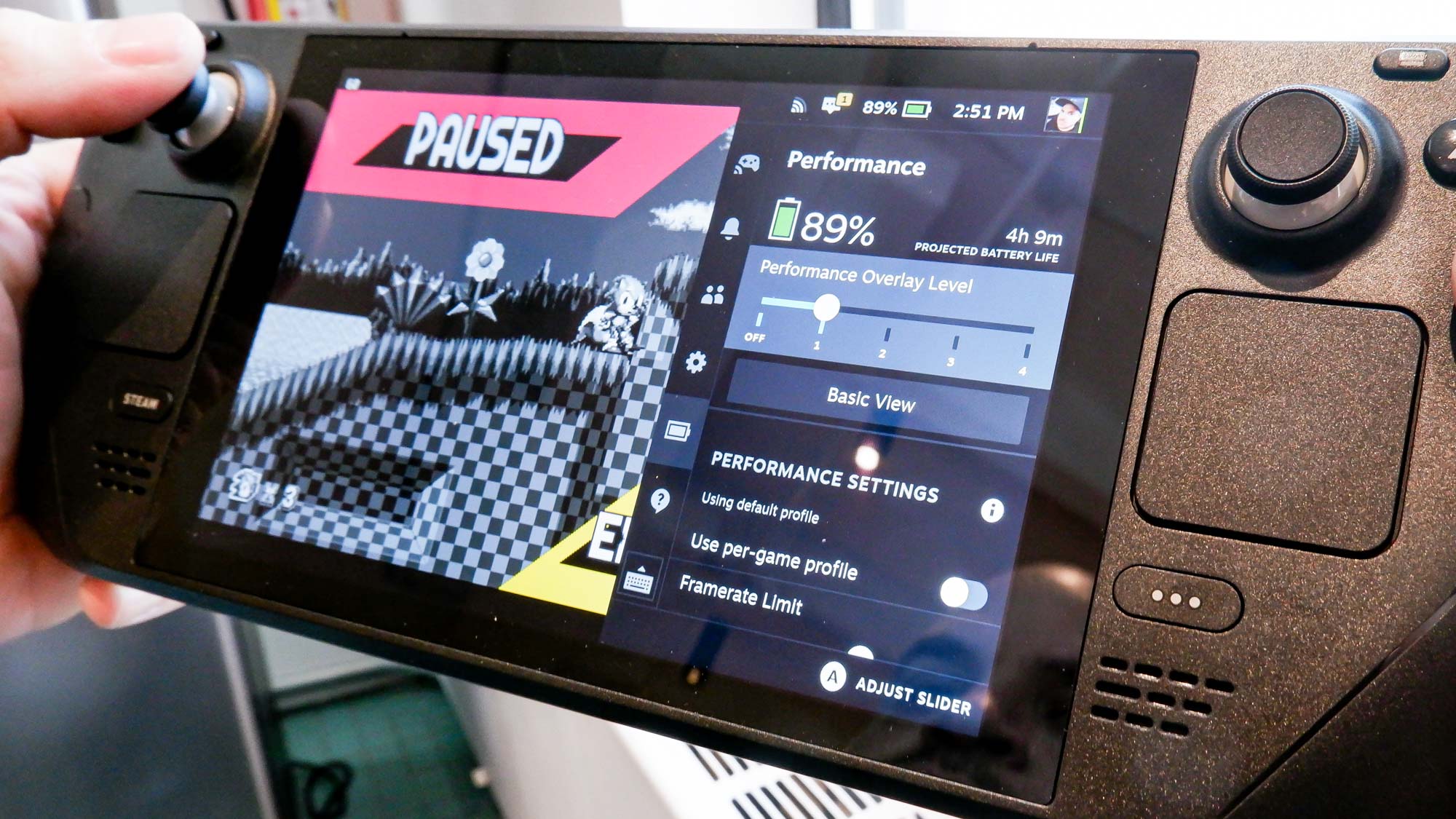
Testing the Steam Deck via our usual methods was interesting, since we were limited to using titles that are verified for the Steam Deck. We could have tried games that weren't verified (more on that below), but those would likely not produce accurate results.
As far as what we were able to test, we ran some of the usual benchmarks on Steam Deck. Assassin’s Creed Odyssey achieved an average of 38 frames per second on High (default) settings but topped out at 23 fps on Ultra High. DiRT 5 averaged 40 fps on medium and 23 on Ultra.
Cyberpunk 2077 and Doom Eternal were two games that have a “Steam Deck” graphical mode, which optimizes games for the handheld. Cyberpunk 2077 hit 29 fps on both Steam Deck mode and Ultra, which is an unexpected result. You would assume it would run worse on Ultra settings. We aren't sure what contributes to the similar numbers seen here. As for the well-optimized Doom Eternal, it's not a big shock to see that it runs at a smooth 60 fps across the board.
Steam Deck review: Software
- SteamOS 3.0 functions as well as Steam on desktop
- The settings option allows for a great degree of optimization
Steam Deck runs on SteamOS 3.0, which is based on the Arch Linux distribution with a KDE Plasma 5 desktop. The OS supports Proton, which is a compatibility layer that lets Microsoft Windows-developed games run on the Linux-based SteamOS. All of that means Steam Deck can run a slew of games, although not all titles are compatible or optimized for the handheld.
Instead of a UI similar to Steam’s Big Picture mode, Steam Deck instead uses a modified version of the Steam desktop client that works well with a controller input. If you’re familiar with Steam’s interface then you’ll have little trouble navigating through its menus and sub-menus. You can access your game library, the Steam store, your friends list, downloads and settings.
Pressing the Quick Settings button lets you see your notifications and allows you to adjust settings such as brightness, speaker volume and controller rumble. You can also select performance options like frame rate limit, refresh rate, thermal power limit and scaling filter. A slew of other options allows you to configure the Steam Deck to perform exactly as you’d like. Tech-savvy users will no doubt appreciate the high level of customization the system offers.
Steam Deck review: Controls
- Responsive and clicky buttons
- Smart button placement
- You can configure every button
- Touch control responsiveness isn't ideal
Comfort was one of my primary concerns prior to testing the Steam Deck. I find the Nintendo Switch cumbersome to use, due to its size. I’m also not a fan of the Joy-Con controllers' small buttons. The Steam Deck has bigger buttons than Nintendo’s handheld, but it’s also a larger, wider and heavier device. Thankfully, the Steam Deck is a joy to play, even for extended periods of time.
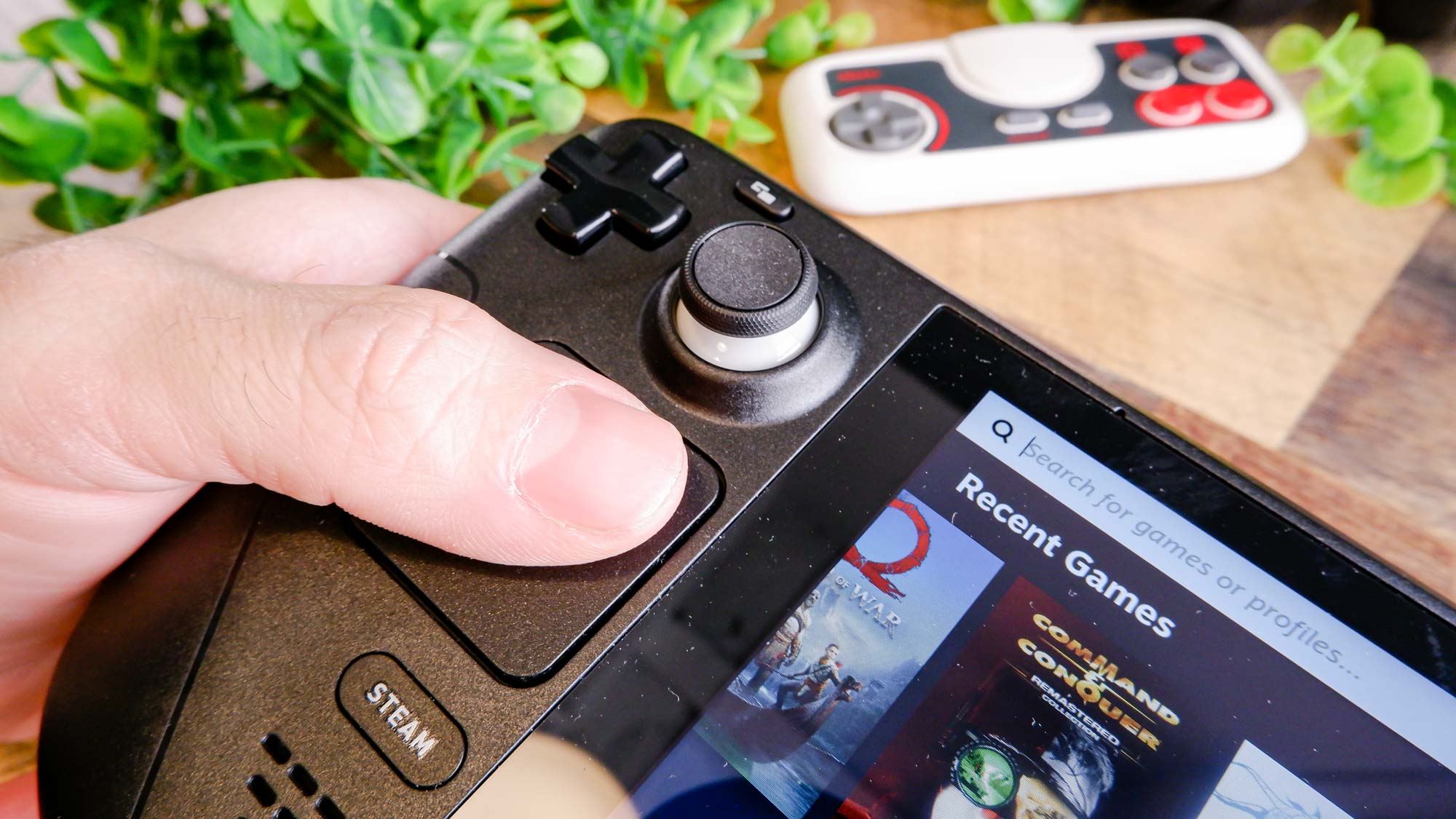
The controller grips on either side of the Steam Deck feel good to hold, since they’re neither too thick nor too thin. The analog sticks are pleasantly loose, and it’s easy to reach them with your thumbs. The shoulder and face buttons provide good resistance and deliver satisfying clicks when you press them. The back buttons reside where your middle and ring fingers naturally rest. Because of that, using these buttons doesn’t feel awkward.

I tested a variety of games to see how well they controlled on Valve’s handheld. Doom Eternal handled like a dream. Mowing down demonic hordes and traversing the hellish landscapes felt as responsive on Steam Deck as on a console or PC. The same is true for Cyberpunk 2077, with its mix of open-world exploration and first-person combat. Despite some of the small text issues I mentioned above, the game felt great to play.
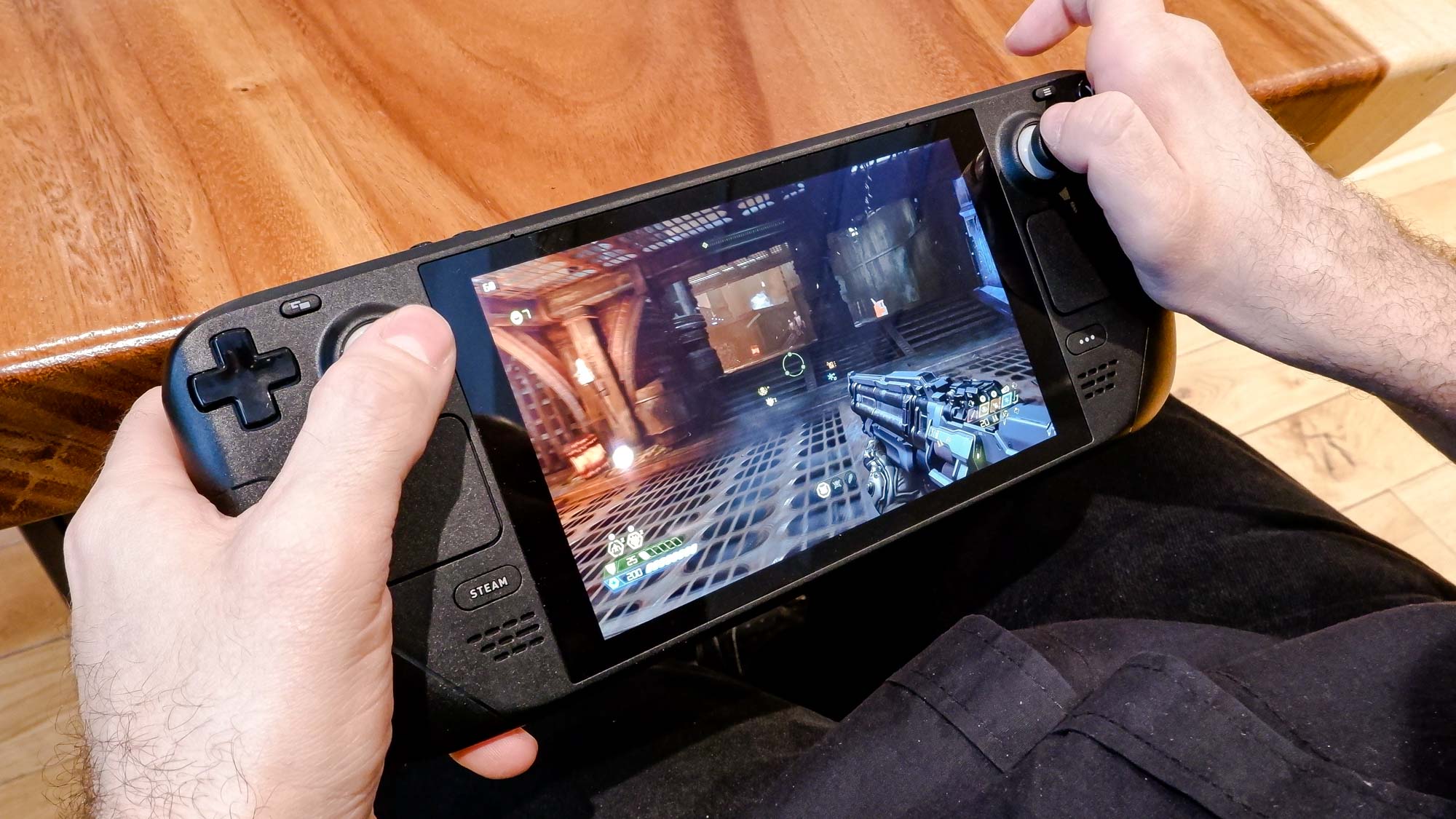
Playing graphically intensive titles on the go is a big selling point for Steam Deck, but it’s just as good for playing less-demanding games. Because the Steam Deck reminds me of the Sega Game Gear, the first title I fired up was Sonic Mania. It looked gorgeous on the 7-inch screen, and played just as well. The D-pad is somewhat small but I was still able to pull off special and super moves in Street Fighter Anniversary Edition with little effort. Retro game fans will love playing classics on this device.

Steam Deck’s trackpads are not only an alternative to the analog sticks, but they also let you to play games that don’t have support for traditional controller interfaces. I ran Command & Conquer: Remastered to test how well the trackpads function with real-time strategy (RTS) games. Though the experience was somewhat clunky due to the imprecise touch controls and trackpads, I was able to select units and move them across the map. I should note that, for RTS games, you’re able to bring up a virtual keyboard by pressing the Steam and X buttons simultaneously.
The Steam Deck’s controls are just as good as those of any modern controller, and its large size is a non-factor. Touch-based controls can be wonky, but overall, playing games on the handheld feels fantastic.
If you want more info, check out our guide on how to customize your controller layout on your Steam Deck.
Steam Deck review: Game library
- Not all Steam games can run on Steam Deck
- Four different compatibiltity categories
The Steam Deck’s game library consists of titles available on Steam. Currently, there are more than 2,000 "Verified" games for Steam Deck. This includes games like Elden Ring and Marvel's Spider-Man Remastered.
Four compatibility categories exist. "Verified" titles, such as Elden Ring, run correctly right out of the box. "Playable" games, such as Team Fortress 2, may require you to select a community controller configuration, or may require you to use touch controls to navigate a launcher. "Unsupported" titles, such as the VR-based Half-Life Alyx are currently not functional on Steam Deck. Lastly, games such as Day of Defeat are designated as "Unknown."
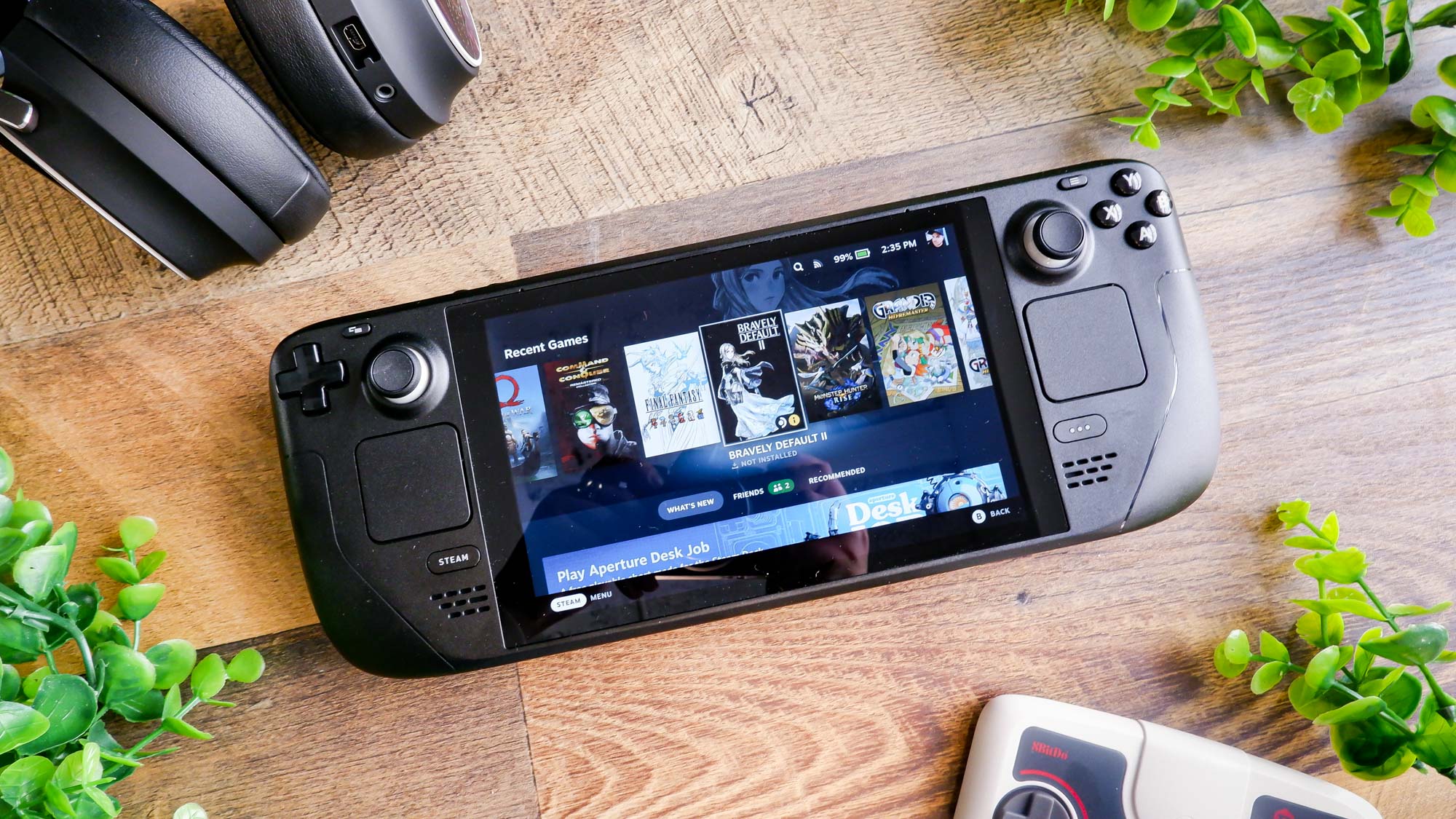
You can read more about Steam Deck compatibility here. ProtonDB also has a list of compatible titles. Note that games listed on ProtonDB are from user reviews, not from Valve.
Steam Deck review: Battery life and heat
Since the Steam Deck is capable of running graphically intensive games, it's no surprise that the handheld can run hot at times.
Our tests revealed that the underside near the vents reaches 109 degrees Fahrenheit, and the entire underside gets as hot as 90 degrees. The screen also reaches 90 degrees. Thankfully, you'll never feel more than mild warmth when playing, since the controls are far from any of the hottest portions.
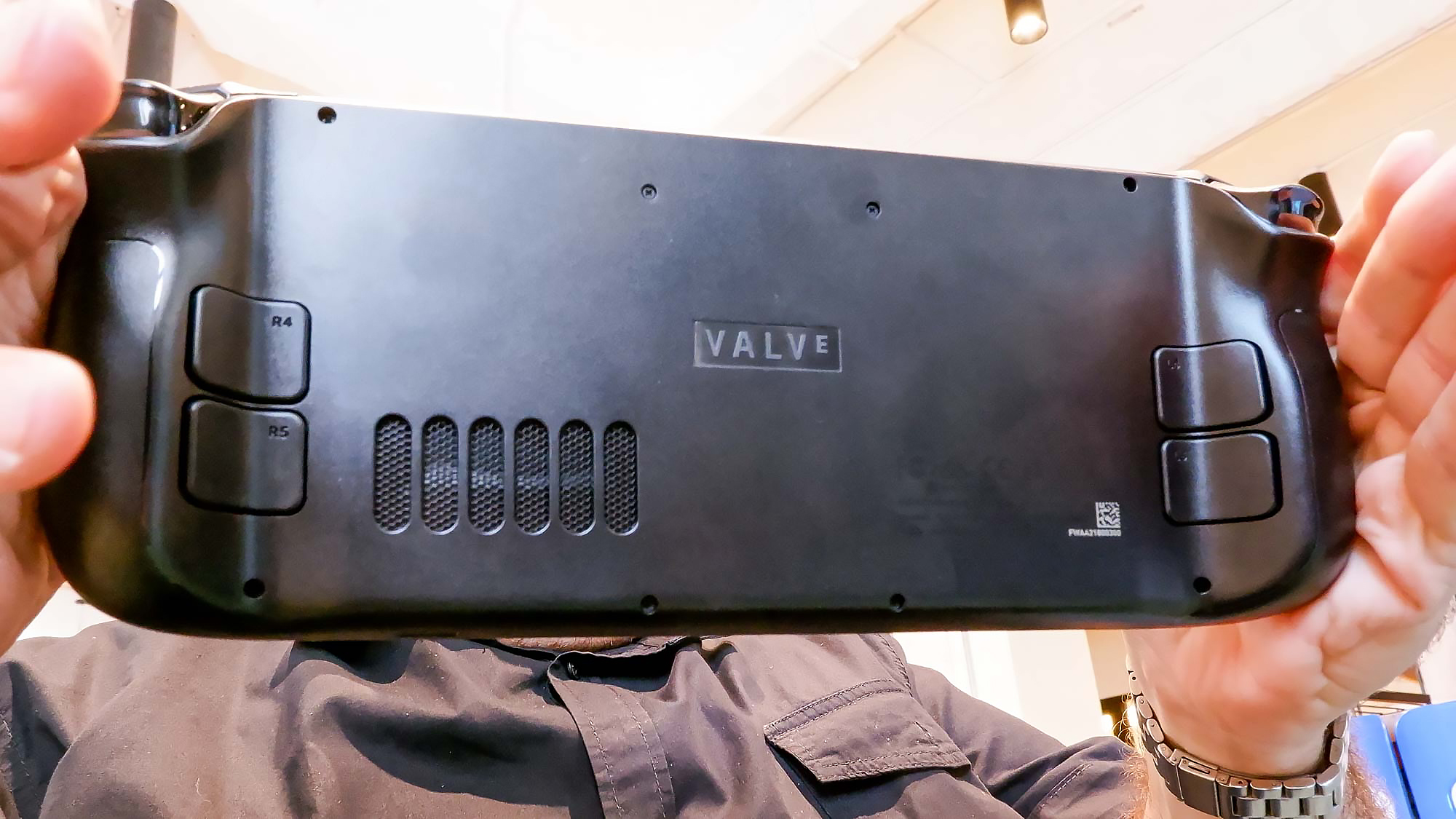
The Steam Deck lasted for 3 hours and 51 minutes during our tests. During my own testing, it ran out of juice at about the three-hour mark. In other words, battery life is dependent on what games you're playing. Sonic Mania isn't as demanding as Cyberpunk 2077, for example. I wish the battery life could have lasted at least five hours, though.
Steam Deck review: Verdict
I’ve been excited about the Steam Deck ever since Valve announced it, and I am impressed by the finished product. The handheld feels great to play, thanks to its balanced weight and comfortable controller layout. Games look fantastic on its 7-inch display, and sound equally as good thanks to the surprisingly punchy speakers. This is arguably the best handheld console ever manufactured.
While the Steam Deck is almost perfect for me, it isn’t without its faults. At the time of writing, there are still many games that either aren’t optimized or cannot run on the handheld. It was wise to include a touchscreen for games that don’t have controller layouts, but I hope future updates make this functionality more precise. The same goes for the trackpads. Thankfully, all of my quibbles with Steam Deck are software-based, and Valve could patch them in future updates.
If you’re a Steam user who wants to take their games on the road, or if you’re someone who wants a beefier handheld than the Nintendo Switch, you can’t go wrong with ordering a Steam Deck. The wait to get one is long, but it’s entirely worth it.
Next: Steam Deck 2 teased by Valve — what we know so far. Looking for something else to play? Check out Hell Let Loose that is too good for its own good.

Tony is a computing writer at Tom’s Guide covering laptops, tablets, Windows, and iOS. During his off-hours, Tony enjoys reading comic books, playing video games, reading speculative fiction novels, and spending too much time on X/Twitter. His non-nerdy pursuits involve attending Hard Rock/Heavy Metal concerts and going to NYC bars with friends and colleagues. His work has appeared in publications such as Laptop Mag, PC Mag, and various independent gaming sites.
